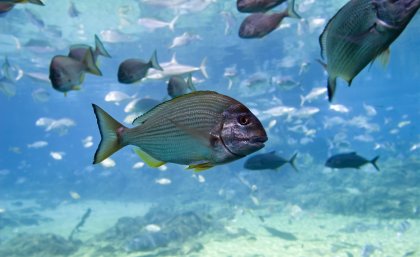
Keen anglers heading out this long weekend should seek a quiet spot or prepare themselves for disappointment, new University of Queensland research shows.
A collaborative study between UQ and the CSIRO has shown that fish learn to avoid hooks that are a risk for their size – but they take the bait more frequently in quiet areas.
UQ Centre for Marine Science Honours student Andrew Colefax has designed a sophisticated underwater stereo video system to understand the common problem of having many bites but few catches.
“We simulated angling baits at fishing hotspots and less fished areas, and discovered that fish are smarter than we gave them credit for,” Mr Colefax said.
“In high-intensity fishing areas, smaller fish that could not engulf the hook fed first with larger hook-susceptible fish hanging back and observing.
“By contrast, in nearby low-intensity fishing areas, the larger fish moved in quickly and attacked the bait.
“A small change in where you fish might greatly increase your catch.”
UQ School of Biological Sciences’ Associate Professor Ian Tibbetts said researchers were surprised to discover that smaller individuals of a species fed sooner than their larger relatives at fishing hotspots.
“This kind of behaviour indicates that the fish observe and learn from their environment and from the mistakes of others,” Associate Professor Tibbetts said.
Each year more than 700,000 fish are caught in Queensland for recreation, with anglers taking home about 8500 tonnes of fin fish, crabs and prawns.
CSIRO collaborator and marine ecologist Mick Haywood said the next step was to work out if fish had spatial awareness of risk.
“It’s possible that individual fish change their feeding behaviour between nearby lightly fished and heavily fished sites,” Mr Haywood said.
Future studies may be able to tell if ‘green zones’, or sanctioned low-intensity fishing areas, might create naïve fish that have not learned to avoid baits.
The researchers believe their study, published in the international Journal of Marine Biology, has global implications because it could increase catches and save on bait bills for the world’s 220 million fishers.
Video: A bream fish with a damaged dorsum displays a difference in behaviour between highly fished and less fished areas.
Media: Associate Professor Ian Tibbetts, i.tibbetts@uq.edu.au.










